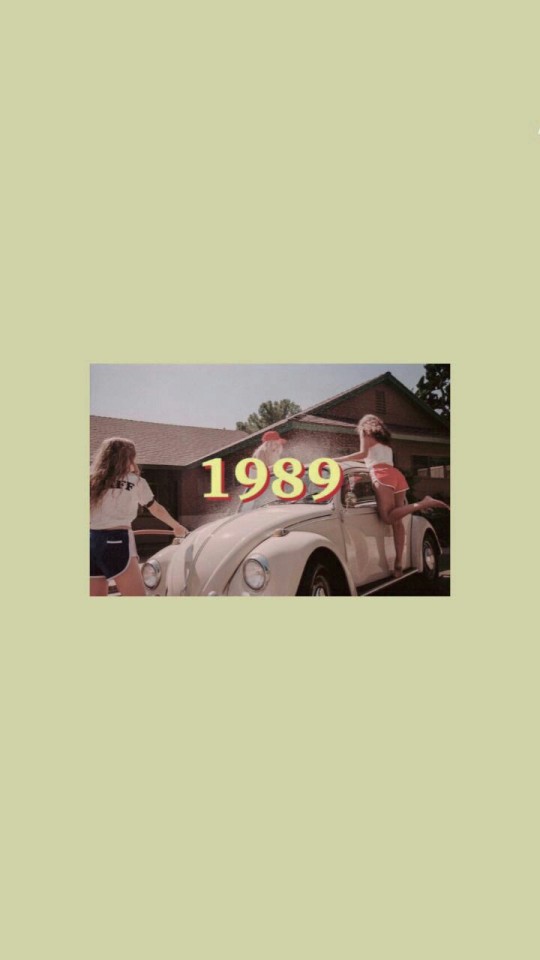#variation
Scotttrembls raised an interesting point: “Do you know if there’s any evolutionary relationships between SVO, SOV and VSO languages? The evolutionary explanation never seems to come up- has this already been disporved or do we not understand enough about language evolution?”
There’s no evolutionary relationship in the sense that all SVO languages are genetically related and separate from all SOV languages etc. SOV, SVO and VSO languages are distributed throughout the world and are found in many different language families. But we know that languages can change types over a period of time so, in this sense, there are evolutionary paths from one type to another. For example, Old English and Latin are considered to be canonically SOV languages but their descendants (English and the modern Romance languages) are SVO languages. You might wonder when an SOV language stops being an SOV languages and becomes an SVO language. You have to bear in mind that these types refer to canonical structures, languages may use other structures at the same time but their use will be more restricted (although there are languages which many would characterise as being ‘free word order’ in which case they would not fall into any of these categories). For example, English is canonically SVO, but English uses other word orders for questions, focus structures etc. So the relative frequencies of particular structures within a language may change over time resulting in what appears to be a single type-switch.
Work on implicational universals (universals of the form which says if a language has structure X then it will have structure Y) initiated by Joseph Greenberg and taken further by John Hawkins makes some interesting predictions for language change. Greenberg’s formulations were for the most part tendencies, i.e. if X then Y significantly more often than not, but Hawkins aimed to identify exceptionless universals which often involved adding extra conditions, i.e. if X then, if Y then Z. This places more constraints on the forms languages can take but it also makes strong predictions about evolutionary paths of language change. The reasoning is roughly: if these formulations hold for the present situation and if there is no reason to assume things were any different in the past then languages can only move through allowed ‘states’ as determined by the strong implicational universals.
We understand enough about the evolution of some language families to be able to test these predictions and the predictions have been largely correct so far. However, many would not take this evolutionary picture to be an ‘explanation’, rather it is seen as a ‘description’ of the facts which allows us to characterise possible evolutionary paths of change and distinguish them from impossible ones. Given that each stage of a language is a present-day language in its time, it is still ultimately up to the explanations offered by formal and functional approaches to account for the form a language takes at any particular point in its evolutionary history.
When people study language typology they study the ways in which languages vary. However, it’s more than just saying different languages use different words or these languages use very similar sounds. We study the ways in which structural features of languages differ (or are similar) and many go further asking questions about what the limits of linguistic structural variation are.
English speakers will know that in a simple transitive clause we start with the subject followed by the verb followed by the object, e.g. ‘Bob (S = subject) likes (V = verb) pizza (O = object)’, i.e. English has typically SVO word order. But are there other ways of arranging such a structure? Logically there are six ways: SVO, SOV, VSO, VOS, OSV, OVS. The next question that a typologist will ask is how are languages distributed across these possibilities. As a null hypothesis we might think that we would expect to find roughly equal numbers of languages in each group, but this is not what we find at all. SVO and SOV account for around 85% of all languages (with SOV being a bit more frequent than SVO). Adding VSO languages brings the total to around 95% of all languages. The question is: why is the distribution of languages so skewed?
Three broad types of answers suggest themselves as candidates (at least to my mind):
1) It could be down to chance – the distribution of languages today may represent a highly skewed sample. If we came back in 1,000 years we might see a completely different distribution. This approach is obviously not taken by language typologists. There is certainly something interesting about the distribution which demands an explanation. To write the pattern off as due to chance would be to miss potentially significant insights into the ways languages are structured and shaped.
2) The formal aspects of human language (perhaps as encoded by Universal Grammar) constrain the surface forms that human languages can inevitably take, i.e. variation is not limitless though it may be apparently vast.
3) The functional pressures that act on speakers and hearers every time they use language will affect which forms languages will prefer to take, i.e. structures that are easier to say and to comprehend will be preferred and so will come to dominate amongst the languages of the world.
Given the great success of generative linguistics in the past few decades, (2) is a very popular approach to take. However, many intuitively feel that the approach in (3) is ultimately more satisfactory as an explanation. Personally I’m inclined to think that if we can explain surface variation in terms of performance preferences, this is a good thing because it means there is less for the formal approach to account for. Furthermore formal aspects of language are most often thought to be all-or-nothing affairs. If a grammar rules out a particular structure, that structure cannot exist, whereas if performance factors disfavour a particular structure, that structure will be either non-existent or rare.
But are (2) and (3) incompatible? You might think so given the distinction that’s often made between competence and performance. Many would not consider performance factors as relating to language proper – it is extra-linguistic and not something the linguist should be looking at. But the fact is that all the (overt) language that we use to construct theories of both competence and performance is being ‘performed’ in some way (either spoken or written or signed). I think there may well be limits on variation set by formal properties of human languages (which will account for some of the totally unattested structures) but others will be set by performance. And then maybe others that are to do with physics and biology more generally (here I’m thinking more of phonological typological patterns).
For now then it may be useful to adopt either (2) or (3) as an approach to language typology with the aim of seeing how far they can go, but always with the ultimate aim of putting the two together in the end for a more comprehensive account of why languages are the way they are.
I want to bend you over the table, eat you out as a thank you for making me breakfast. I want to make you gasp and moan and scream just for me, my sweet girl. And I know you’ll want more. You always do.
I want to kiss you everywhere and hear you cry out for me. But first you have to be a good girl for me and listen to what I say, or I won’t give you anything.









WALLPAPERS VARIADOS | DÊ LIKE!
Ich weiß nicht, was soll es bedeuten, Dass ich so traurig bin, Der Ohrwurm aus uralten Zeiten, Der geht mir nicht aus dem Sinn.
Die Luft ist kühl und es dunkelt, Reißerisch strömet der Rhein, Das Licht auf dem Berge funkelt, Auch ohne Sonnenschein.
Die schönste Jungfrau sitzet Dort oben wunderbar, Ihr gold'nes Geschmeide blitzet, Sie kämmt ihr güldenes Haar.
Sie kämmt es mit goldenem Kamme, Und singet ein Lied dabei; Das hat eine wundersame, gewaltige Melodei.
Der Schiffer im großen Schiffe, Sah kaum was, ach, oh weh; Er schaut auf die Felsenriffe, Doch im Dunkeln sah er sie nie.
Ich glaube, die Wellen verschlingen, Ohne den Schiffer den Kahn, Und das hat mit ihrem Singen, Natürlich die Frau da getan.
L.Huestegge
Hi All,
Apologies again for my lengthy delay in reviewing articles- just one more week till I defend my dissertation proposal and hopefully become ABD in time for 2019! I’ll have to continue my break until I get that sorted in early December, but in the meantime here’s an interesting article on what a linguist can learn from looking at a gravestone.
LL Recipe Comparison:
This article reminds me of the recipe for Linguine al Limone:

Much as you will be surprised to learn the amount of information linguists can glean from gravestones, you’ll find yourself surprised at the simple deliciousness of this easy yet luscious dish! This is a perfect complement to any kind of seafood main course or as a stand alone treat, much as this article will remind you that despite how we are buried alone our words will live on as a complement to our lives, and that’s something to be thankful for! Good cooking!
MWV 11/19/18
Alright, I think I made the 2 patterns built on the same premise different enough. The rainbow version is the International Women’s Day version, the other is Y2K ladies.
Post link
Completed Art Commission. (ViserysIvair) [censored version]
This time came with Ivair, another lovely pair with Viserys! They are childhood friends and grew up together in the mafia.
As a scenario given, since their family members were fiercely annihilated by an enemy group, the two are finding comfort in each other even though they are not actually in a relationship. The atmosphere is sad but I love the setting here, that’s a kind of romance! xD I also made a variation version <33
Thank you so much for commissioning me!! ^_^
Subscribe + Become Member:
https://www.patreon.com/xearo
-
✨More Info / Past Collections - Website|My Online Store
✨Get Exclusive Rewards / Support me on -Patreon|Ko-fi
Post link
Video:
“Bach Goldberg Variations” by Glenn Gould. 1981 Studio.




![Completed Art Commission. (ViserysIvair) [censored version]This time came with Ivair, another lovely Completed Art Commission. (ViserysIvair) [censored version]This time came with Ivair, another lovely](https://64.media.tumblr.com/4b48d30513c982eda1ffca7cf4e832c2/8028b4ec402147b2-b6/s500x750/4c5f41149de4aa1d714f74b7c80e90f6c87a67dc.jpg)
![Completed Art Commission. (ViserysIvair) [censored version]This time came with Ivair, another lovely Completed Art Commission. (ViserysIvair) [censored version]This time came with Ivair, another lovely](https://64.media.tumblr.com/9cd2c3ad0e568d29441008bc38a568e9/8028b4ec402147b2-bb/s500x750/ef0995d9a8746747839df06cf5e1d8070d473b8e.jpg)